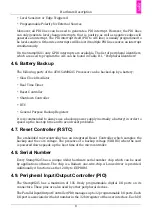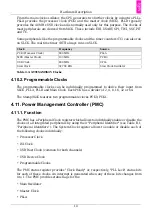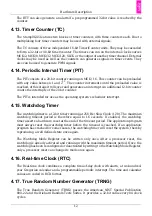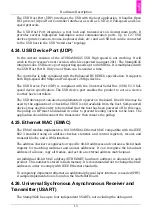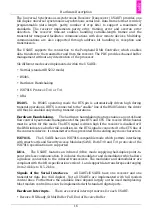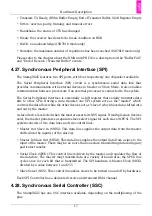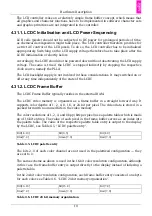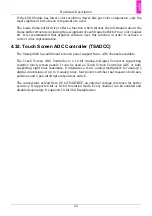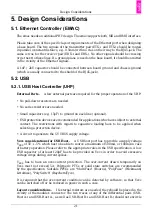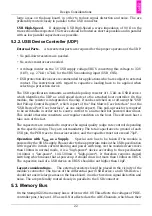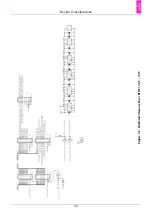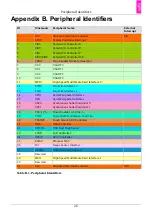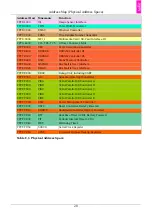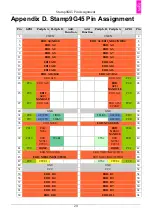
Hardware Description
14
JTAG interface devices are available for the unit. However, the use of them is not within
the scope of this document.
4.21. Two-wire Interface (TWI)
The TWI is also known under the expression "I
2
C-Bus", which is a trademark of Philips
and may therefore not be used by other manufacturers. However, interoperability is
guaranteed. The TWI supports both master or slave mode.
The TWI uses only two lines, namely serial data (SDA) and serial clock (SCL). According to
the standard, the TWI clock rate is limited to 400 kHz in fast mode and 100 kHz in normal
mode, but configurable baud rate generator permits the output data rate to be adapted
to a wide range of core clock frequencies.
4.22. Multimedia Card Interface (MCI)
The Stamp9G45 features a onboard Micro-SD-Card slot, which is connected to the MCI-
B interface of the microcontroller. The MCI-A interface is provided for external additional
use.
The MultiMedia Card Interface (MCI) supports the MultiMedia Card (MMC) Specification
V3.11, the SDIO Specification V1.1 and the SD Memory Card Specification V1.0.
The MCI includes a command register, response registers, data registers, timeout
counters and error detection logic that automatically handle the transmission of
commands and, when required, the reception of the associated responses and data with a
limited processor overhead. The MCI supports stream, block and multi-block data read and
write, and is compatible with the Peripheral DMA Controller (PDC) channels, minimizing
processor intervention for large buffer transfers.
The MCI operates at a rate of up to Master Clock divided by 2 and supports the interfacing
of 2 slot(s). Each slot may be used to interface with a MultiMediaCard bus (up to 30 Cards)
or with a SD Memory Card. Only one slot can be selected at a time (slots are multiplexed).
A bit field in the SD Card Register performs this selection.
The SD Memory Card communication is based on a 9-pin interface (clock, command,
four data and three power lines) and the MultiMedia Card on a 7-pin interface (clock,
command, one data, three power lines and one reserved for future use). The SD Memory
Card interface also supports MultiMedia Card operations. The main differences between
SD and MultiMedia Cards are the initialization process and the bus topology.
4.23. USB Host Port (UHP)
In the current revision of the AT91SAM9G45 USB High speed is not working. It will
work in the processor's next revision, which is expected in august 2011. The Stamp9G45
integrates two USB host ports supporting speeds up to 480 MBit/s. USB Host Port A is
connected directly to the transceiver, USB Host Port B is multiplexed with the USB device
port. Only one of them can be used at a time.
The controller is fully compliant with the Enhanced HCI(EHCI) specification. It supports
both High-speed 480 Mbps and Full-speed 12 Mbps devices.









